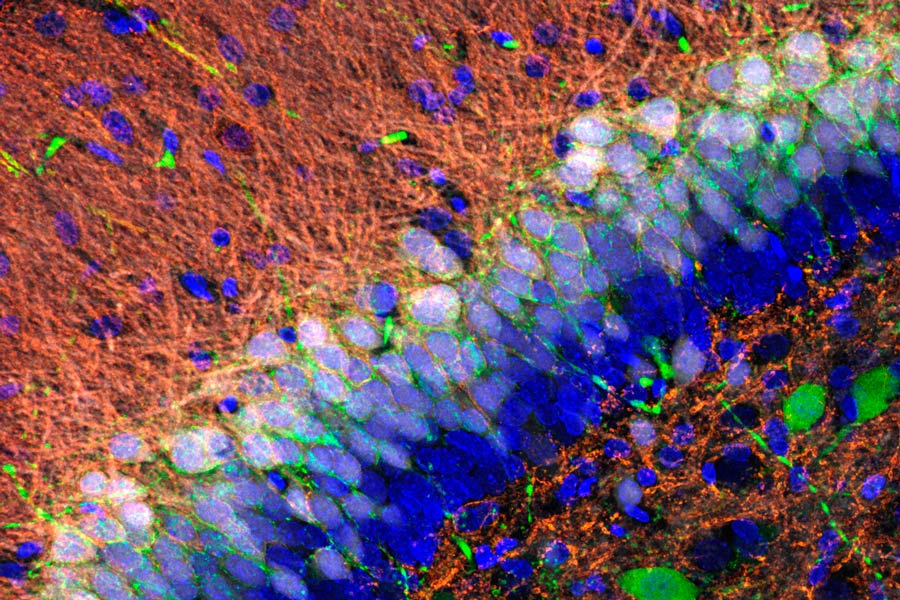Between Arousal and Inhibition
Why nerve cells in the brain process information differently

Granule cells (blue) process and encipher information and assemble it into a kind of map in the dentate gyrus. Source: Nature Communications
/Uni Freiburg/ The dentate gyrus is the “input point” for the hippocampus part of the brain. It transmits information from the short term memory to the long term. It consists of granule cells, which are especially dense in this area of the brain, and interneurons, which are linked up in the central or peripheral nervous system between several nerve cells and have an inhibiting effect on their activity. Both types of cell process information and differentiate closely-related memories. A team headed by Prof. Dr. Marlene Bartos from the Institute of Physiology I of the University of Freiburg, which also includes lead author Dr. Claudio Elgueta, has found why granule cells and interneurons process incoming signals differently: they have fundamentally different structures and functional characteristics. The work group has published its results in the journal Nature Communications.
The dendritic appendages of the nerve cells receive incoming signals rather similarly to antennae. Interneurons can be severely inhibited by chloride transporters, which enhance the inhibitory signals, and the high density of GABAA receptors. These interneurons do not directly process information but determine which granule cells are involved in information processing. Granule cells on the other hand have lower densities of GABAA receptors and are mildly inhibited: they process and encipher signals from the environment which results in a map-like representation of the environment in the dentate gyrus.
If the degree of inhibition in the brain cells changes, malfunctions can arise in the processing, enciphering and accessing of information. This can impair memory function and lead to neurological disorders. These results are a contribution to a better understanding of the mechanisms of information processing in the central nervous system.
Since 2018 Marlene Bartos and her team have received an Advanced Grant of 2.5 million euros from the European Research Council (ERC).
Original publication
Elgueta, C., Bartos, M. (2019): Dendritic inhibition differentially regulates excitability of dentate gyrus parvalbumin-expressing interneurons and granule cells. In: Nature Communications 10. DOI: 10.1038/s41467-019-13533-3




